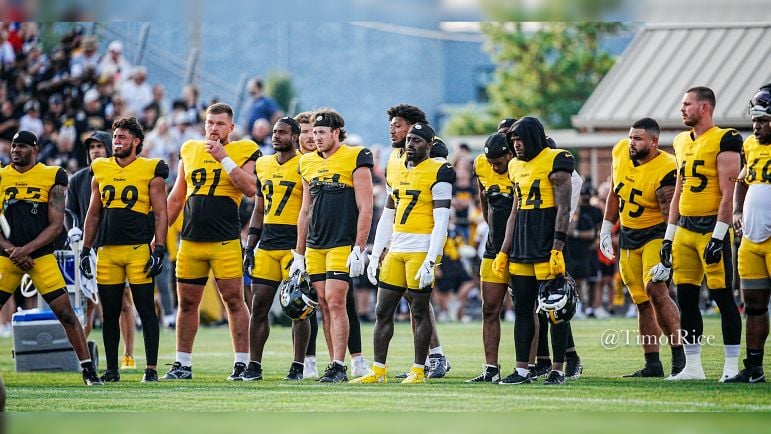The Pittsburgh Steelers are built around their defense. That’s nothing new. Even during the dynasty era of the 1970s, the Steel Curtain was a defining feature. Some of the greatest players to play in Pittsburgh were on the defensive side of the ball. And that mentality of having a dominant defense continues to this day. Head coach Mike Tomlin wants to build a dominant defense.
But as much as the Steelers’ defense helps the team be competitive during the regular season, they’ve struggled to rise to the occasion in the playoffs. Former NFL QB Dan Orlovsky mentioned that the Steelers are averaging 38.8 points allowed per game in their last five playoff appearances, all losses. And Mina Kimes thinks she knows what the issue is.
“If this defense doesn’t get better at defending motion, it’s dead on arrival against the best offenses in the league,” Kimes said on Monday’s episode of NFL Live. “This was a huge problem against the Baltimore Ravens; it was a huge problem all season long. They were a bottom-five unit in success rate when offenses used motion. When offenses didn’t use motion, they were just outside the top-10.”
What’s the problem with motion? Well, it can force defenders to move around a lot pre-snap to travel with the player they’re covering. And depending on timing, that can lead to a player being out of position at the snap. It can also pull players out of certain spots that the offense wants to attack. In the run game, if an offense can motion players out and pull linebackers out of the box, it makes running the ball much easier.
But why is motion such a problem for the Steelers’ defense? Former Steelers S Ryan Clark thinks it’s because the Steelers’ offense doesn’t feature much motion at all.
“First thing is, they don’t practice against it a lot,” Clark said. “How often have we come in here and talked about the Pittsburgh Steelers’ offense being an offense that motions all of the time? So you don’t get to see it in practice. If you’re the Los Angeles Rams, you see it all the time. If you’re the San Francisco 49ers, you see it all the time. If you’re the Pittsburgh Steelers, an offense that’s mostly stagnant, it’s difficult to get those reps.”
The Steelers haven’t had a top-tier defense in quite a while. They’ve lacked talent and diversity in their schemes. That includes pre-snap motion and motion at the time of the snap. And if your offense during training camp and in-season practices isn’t using much motion at all, your defense isn’t used to working against it on the field.
Ahead of the Super Bowl between the Philadelphia Eagles and the Kansas City Chiefs, Sportico.com looked at the matchup through the lens of motion. In 2024, the Steelers had a player in motion at the snap only 16 percent of the time, the fifth-lowest rate among all 32 teams. The Eagles led the league at 56 percent.
And the Baltimore Ravens, who ran all over the Steelers’ defense in the playoffs, had a player in motion at the snap on 30 percent of their plays, the ninth-highest rate in 2024—no wonder the Steelers struggled against the Ravens.
So, how do the Steelers fix the issue of defending motion? Well, a big part of it is communication. Players have to recognize what’s going on and communicate with each other. Communication was a huge problem for the Steelers last year. It’s a problem the defense is addressing during camp, according to LB Payton Wilson.
But if you believe Ryan Clark, that issue won’t be truly fixed until the Steelers get on board with using motion on offense.








